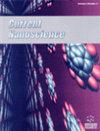Current Application of Nanotechnology to Enhance Cutaneous Permeation of Vitamin C and Derivatives
IF 1.5
4区 材料科学
Q4 BIOTECHNOLOGY & APPLIED MICROBIOLOGY
引用次数: 0
Abstract
Background:: Vitamin C (VitC), or L-ascorbic acid in topical formulations acts as an antioxidant, depigmentant, stimulator of stratum corneum renewal and collagen synthesis. VitC is a thermolabile, water-soluble compound, oxidizes when its solution is exposed to air, metals and high pH. Derivative compounds were created to circumvent the instability, poor penetration capacity in the stratum corneum. Furthermore, new drug delivery systems using nanotechnology began to be studied, providing protection against degradation and penetration through the skin. Objective:: The current paper aimed at carrying out a systematic review between 2006 and 2023, seeking innovative topical formulations containing VitC and its derivatives, where the problem of low permeation and instability was circumvented. Methods:: The search for articles was performed in the Science Direct, Springer and PubMed databases. The largest amount of information was gathered on innovative formulations for topical use for the delivery of VitC and its derivatives, physicochemical characterization data, in vitro and in vivo studies. Results:: The search in the databases resulted in a total of 3032 articles, of which 16 studies were selected for the integrative review, as they proved the possibility of carrying the active ingredient in nanosystems, allowing increased stability, better permeation properties and in vitro cutaneous release, enabling the therapeutic function of the active ingredient through the application of formulations to the skin. In vivo studies also proved the clinical efficacy of the compound in liposomes, ethosomes and niosomes. Conclusion:: The most described nanocarriers were nanoparticles and liposomes, and one study involved niosomes and ethosomes. Therefore, even though it is not a newly discovered molecule, VitC continues to be studied in topical formulations ensuring stability, permeation, and effectiveness.纳米技术在增强维生素 C 及其衍生物皮肤渗透性方面的应用现状
背景::维生素 C(VitC)或左旋抗坏血酸(L-ascorbic acid)在外用制剂中具有抗氧化、去色斑、促进角质层更新和胶原蛋白合成的作用。抗坏血酸是一种可热分解的水溶性化合物,其溶液暴露在空气、金属和高 pH 值环境中会发生氧化。为了避免这种不稳定性和在角质层中渗透能力差的问题,人们创造了衍生化合物。此外,人们还开始研究利用纳米技术的新型给药系统,以防止降解和穿透皮肤。研究目的本文旨在对 2006 年至 2023 年间的研究进行系统回顾,寻找含有 VitC 及其衍生物的创新外用制剂,以解决渗透率低和不稳定的问题。研究方法在 Science Direct、Springer 和 PubMed 数据库中搜索文章。收集到的最大量信息涉及用于外用输送维生素 C 及其衍生物的创新配方、理化特性数据、体外和体内研究。结果::通过在数据库中搜索,共获得 3032 篇文章,其中 16 项研究被选入综合综述,因为这些研究证明了在纳米系统中携带活性成分的可能性,从而提高了稳定性,改善了渗透特性和体外皮肤释放,使活性成分通过在皮肤上使用配方发挥治疗功能。体内研究也证明了该化合物在脂质体、乙硫体和niosomes中的临床疗效。结论描述最多的纳米载体是纳米颗粒和脂质体,有一项研究涉及niosomes和ethosomes。因此,尽管 VitC 并非新发现的分子,但人们仍在继续研究其外用配方,以确保其稳定性、渗透性和有效性。
本文章由计算机程序翻译,如有差异,请以英文原文为准。
求助全文
约1分钟内获得全文
求助全文
来源期刊

Current Nanoscience
工程技术-材料科学:综合
CiteScore
3.50
自引率
6.70%
发文量
83
审稿时长
4.4 months
期刊介绍:
Current Nanoscience publishes (a) Authoritative/Mini Reviews, and (b) Original Research and Highlights written by experts covering the most recent advances in nanoscience and nanotechnology. All aspects of the field are represented including nano-structures, nano-bubbles, nano-droplets and nanofluids. Applications of nanoscience in physics, material science, chemistry, synthesis, environmental science, electronics, biomedical nanotechnology, biomedical engineering, biotechnology, medicine and pharmaceuticals are also covered. The journal is essential to all researches involved in nanoscience and its applied and fundamental areas of science, chemistry, physics, material science, engineering and medicine.
Current Nanoscience also welcomes submissions on the following topics of Nanoscience and Nanotechnology:
Nanoelectronics and photonics
Advanced Nanomaterials
Nanofabrication and measurement
Nanobiotechnology and nanomedicine
Nanotechnology for energy
Sensors and actuator
Computational nanoscience and technology.
 求助内容:
求助内容: 应助结果提醒方式:
应助结果提醒方式:


